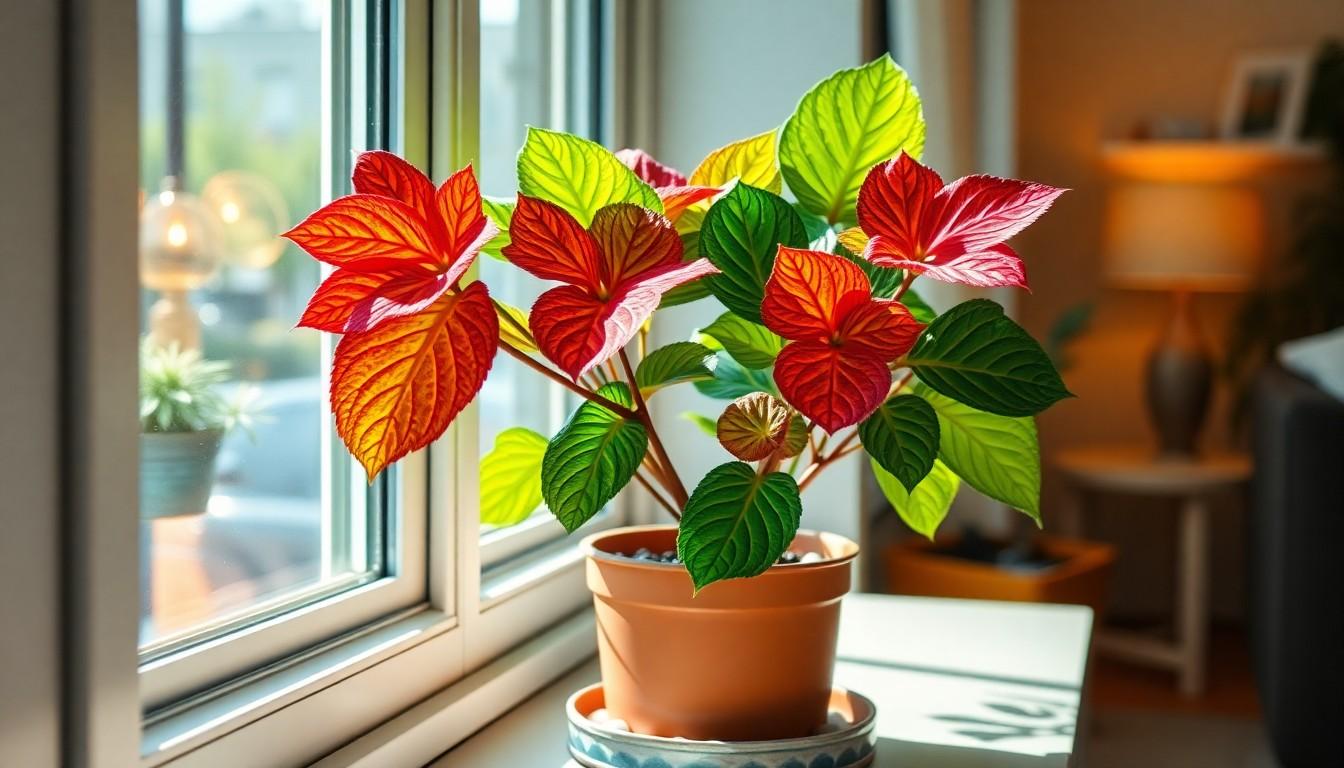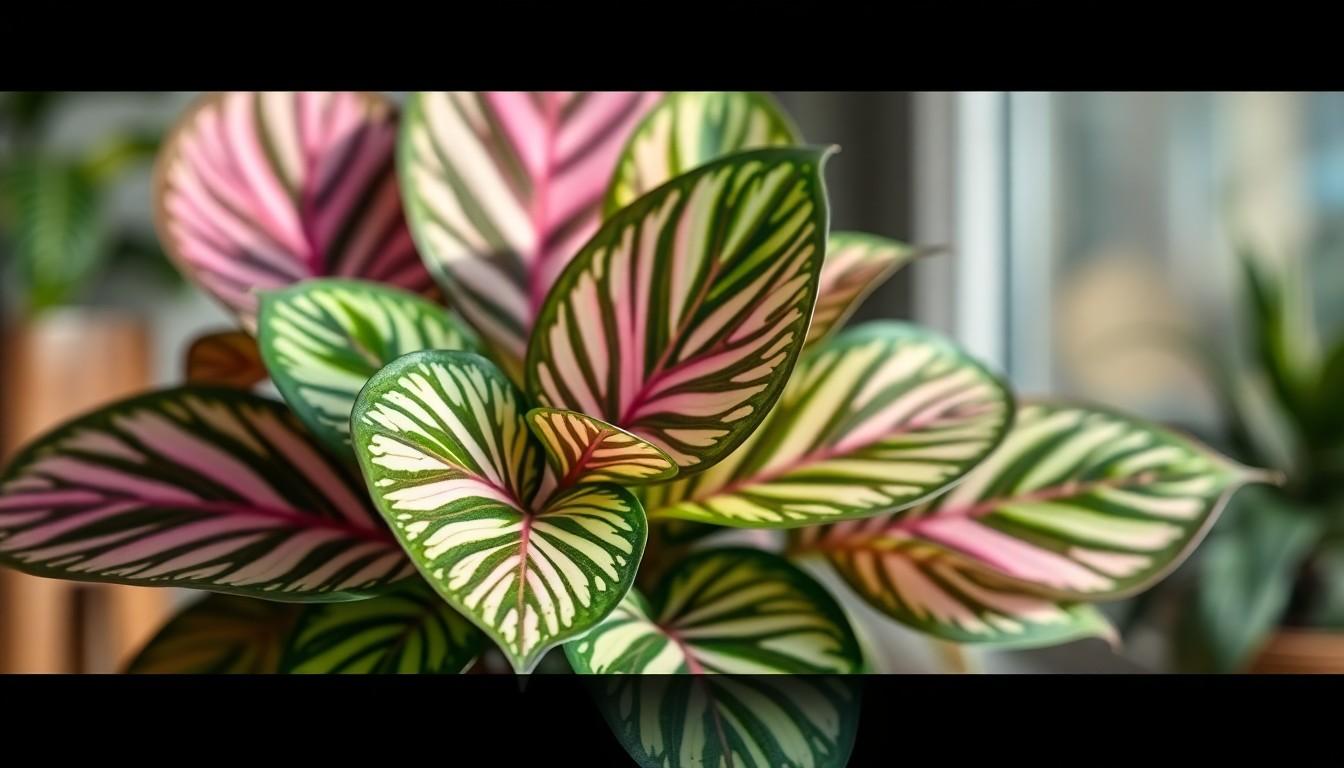If you’re looking to add a splash of color to your home, the fittonia plant is here to steal the spotlight. With its vibrant leaves and unique patterns, this little beauty isn’t just a pretty face; it’s also a low-maintenance companion that thrives with a bit of TLC. But don’t let its delicate appearance fool you—caring for a fittonia can be as easy as pie, as long as you know a few tricks.
Overview of Fittonia Plants
Fittonia plants, also known as nerve plants, belong to the Acanthaceae family. These tropical plants originate from the rainforests of South America, thriving in humid, low-light environments. Colors vary, featuring vibrant shades of green, pink, red, and white, making them popular choices for indoor decor.
Height ranges from 3 to 6 inches, with a spread of about 12 inches. Fittonias grow well in pots, ensuring they bring a touch of nature into any space. Their small stature and attractive foliage allow them to complement larger plants beautifully.
These plants require consistent moisture, but overwatering causes root rot. Soil should be well-draining, retaining some humidity. When the humidity level drops below 50 percent, leaves may wilting, signaling a need for increased moisture. Fertilizing every four to six weeks during the growing season supports robust growth.
Propagation of fittonias occurs easily from cuttings. Taking a cutting with several leaves ensures a higher chance of successful rooting. Placing the cutting in water or moist soil encourages sprouting.
Fittonias prefer temperatures between 65°F and 80°F. Exposure to cold drafts or sudden temperature changes damages the leaves. Regularly cleaning leaves with a damp cloth enhances appearance and promotes healthy growth.
Fittonia plants stand out with their unique colors and patterns. Their low-maintenance nature makes them suitable for both novice and experienced plant enthusiasts. With proper care and attention, fittonias thrive, becoming a focal point in indoor gardening.
Growing Conditions

Fittonia plants thrive in specific growing conditions that enhance their vibrant foliage and overall health. Proper attention to these factors ensures optimal growth.
Light Requirements
Fittonias flourish in bright, indirect sunlight. Direct sunlight can scorch their delicate leaves, leading to unsightly damage. Placing the plant near a north or east-facing window typically creates an ideal environment. Insufficient light can result in stunted growth and faded colors. A grow light can supplement natural light in darker spaces.
Temperature and Humidity
Fittonias prefer temperatures between 65°F and 80°F for robust development. Exposure to cold drafts or temperatures below 50°F can cause stress, impacting health. High humidity levels contribute significantly to their well-being, ideally exceeding 50 percent. Using a pebble tray with water beneath the pot or employing a humidifier can help achieve desired humidity. Regular misting also benefits fittonias, promoting lush growth and vibrant colors.
Watering and Fertilizing
Maintaining the right watering schedule and choosing appropriate fertilizers is crucial for fittonia health. These plants thrive on consistent moisture without becoming waterlogged.
Watering Frequency
Fittonia plants require regular watering, usually every 1 to 2 weeks, depending on environmental conditions. Checking the soil moisture is essential; it should feel slightly damp but not soggy. When watering, it’s important to allow excess water to drain out completely to avoid root rot. During hotter months, increasing the frequency may be beneficial. As the plant adapts to its environment, monitoring for signs of wilting or drying out helps determine if adjustments are necessary.
Recommended Fertilizers
Fertilizing fittonia every four to six weeks during the growing season encourages robust growth and vibrancy. Organic options, such as liquid fertilizer diluted to half strength, are effective. A balanced fertilizer with equal parts nitrogen, phosphorus, and potassium supports overall health. Another option includes a fertilizer formulated for houseplants. Additionally, it’s wise to reduce or eliminate feeding during winter months when growth slows. Proper fertilization complements the plant’s watering routine, promoting lush foliage and vitality.
Common Pests and Diseases
Fittonia plants can encounter several pests and diseases. Recognizing these threats is essential for maintaining their health.
Identifying Pests
Common pests include spider mites, aphids, and mealybugs. Spider mites display fine webbing and small, discolored spots on leaves. Aphids often cluster on new growth, causing leaves to curl or yellow. Mealybugs appear as white, cottony masses, typically found in leaf joints and on stems. Each pest can weaken a fittonia, leading to reduced growth and vigor.
Treatment Options
Treating pests requires prompt action. Insecticidal soaps or neem oil effectively eliminate these nuisances. Directly spraying affected areas suffocates the pests without harming the plant. For infestations, gently wiping off the pests with a cloth can help. Regular inspections prevent severe outbreaks and promote early intervention. Maintaining proper care routines, like increasing humidity, discourages pest infestations and keeps fittonia healthy.
Propagation Techniques
Propagation of fittonia plants is straightforward, providing opportunities to expand collections or share with friends. Two popular methods include stem cuttings and division.
Stem Cuttings
Stem cuttings are a reliable method for propagating fittonias. To begin, select healthy stems around 4 to 6 inches long, ensuring they contain several leaves. Remove the leaves from the bottom half, preventing rot once submerged in water or soil. Placing the cuttings in water requires regular changes to maintain cleanliness; roots typically develop within two to four weeks. Alternatively, potting the cuttings directly into moist soil promotes growth. Covering the pot with plastic creates a humid environment, encouraging root establishment.
Division Method
The division method offers another effective approach for fittonia propagation. This technique involves separating a mature plant into smaller sections, each with roots and shoots. First, carefully remove the parent plant from its pot and gently disentangle the roots. Next, divide it into sections, ideally two to four, ensuring each section has adequate foliage. After dividing, replant the sections in fresh, well-draining soil. Watering these new plants and placing them in a warm, humid location aids in recovery and growth.
Conclusion
Caring for a fittonia plant can be a rewarding experience that enhances any indoor space. With its striking foliage and low-maintenance needs, it’s an excellent choice for both beginners and seasoned plant lovers. By ensuring the right humidity levels, proper watering, and adequate light, fittonias can thrive beautifully. Regular attention to their health will keep them vibrant and pest-free. Whether through propagation or simply enjoying their beauty, fittonias offer a delightful addition to home decor, bringing a touch of nature indoors.

